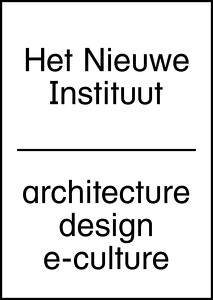BLUE: Architecture of UN Peacekeeping Missions
May 28–November 27, 2016
Giardini
Venice
Italy
Since the end of the Cold War and increasingly after 9/11 and the “War on Terror,” today’s wars are fought between large international coalitions and insurgent networks. War has moved to the city together with the entire security apparatus, including the peacekeepers and their infrastructure. The exhibition BLUE: Architecture of UN Peacekeeping Missions highlights this emerging landscape through an examination of one of its most predominant footprints: the UN compound.
The legacy of the UN’s peacekeeping missions
Malkit Shoshan, architect and director of the architecture think-tank FAST, has been invited by Het Nieuwe Instituut (architecture, design, digital culture) in Rotterdam to curate the Dutch Pavilion at the 15th Venice Architecture Biennale. Her ongoing research into architecture in conflict areas fits neatly within the Architecture Biennale’s overarching theme: Reporting from the Front.
The United Nations has peacekeeping missions, troops and compounds in hundreds of cities around the world. Nine of the largest UN missions are based in the Sahel region of Sub-Saharan Africa, in cities that have been devastated by long periods of drought, militarised conflicts, forced displacement, famine and disease.
The UN Peacekeeping camps are designed as resourceful islands in cities. They are shut off from their direct surroundings. Their extreme design mirrors global power structures of systematic isolation and the twentieth-century mindset of separation. The large-scale global presence of the peacekeeping forces generates waste and burdens the already fragile environment by taking over scarce local resources such as the mobility infrastructure, grazing land and water. It makes no contribution to improving the lives of the local inhabitants.
Shoshan has focused on the progressive way that the Netherlands contributes to the United Nations’ peacekeeping missions. The UN itself talks in terms of “Guidelines for the integrated Approach,” uniting Defence, Diplomacy and Development. Shoshan proposes adding a fourth “D” for Design. A comprehensive design process can mitigate between the different scopes of the mission and turn the UN base from a closed fort to a catalyst for local development. Being in the frontline of war, the UN should use its resources to strengthen and empower the local population.
BLUE
The presentation in the Dutch Pavilion centres on the case study of Camp Castor in Gao, Mali, where the UN is carrying out a mission. The colour blue is used as a metaphor for the conflict, uniting architecture and human rights. The mission is located in the desert region, where the Blue Helmets meet the “Blue Men” of the desert: the Tuareg.
The confrontation between different systems—foreign and local, military and civilian, settlement and desert, Blue Helmets and blue people, the crisis and the Dutch approach—provides the prerequisites for new spatial conditions. BLUE explores this emerging landscape and takes part in an ongoing conversation with military engineers, diplomats, economists and anthropologists. By linking cultural research to architectural research and activism, Shoshan’s research aims to make visible the spatial challenges and opportunities of this complex situation.
Malkit Shoshan
Malkit Shoshan studied architecture and urban planning at the IUAV (Venice, Italy) and at the Technion (Haifa, Israel). She is the founder of the architecture think-tank FAST, the Foundation for Achieving Seamless Territory. Her work explores and highlights the relationships between architecture, politics and human rights. She is the author of the award-winning book Atlas of the Conflict, Israel-Palestine (2010), and Village (2014).
Het Nieuwe Instituut
The contemporary era is characterised by radical technological, economic, cultural and social shifts. Het Nieuwe Instituut aims to illuminate and map a rapidly changing world while simultaneously fostering discussion of topics related to the vast field of design. All the institute’s activities are grounded in the principles of design and innovation—two concepts bound up with changing value systems and conflict.
Het Nieuwe Instituut organises exhibitions, lectures and fellowships, carries out research and development projects, and publishes reports on the outcomes of its projects.


